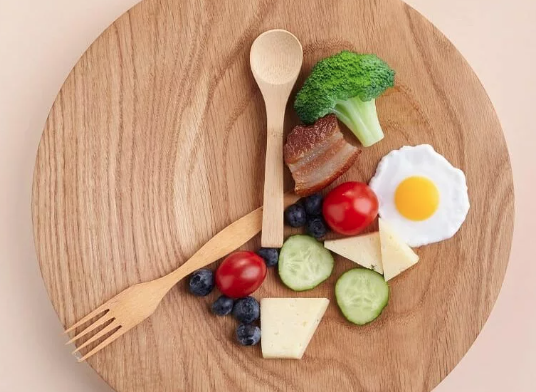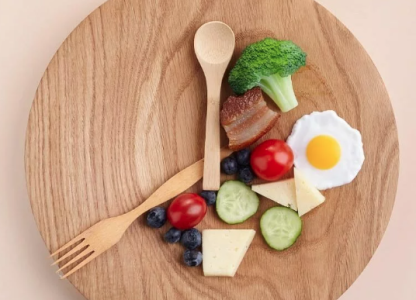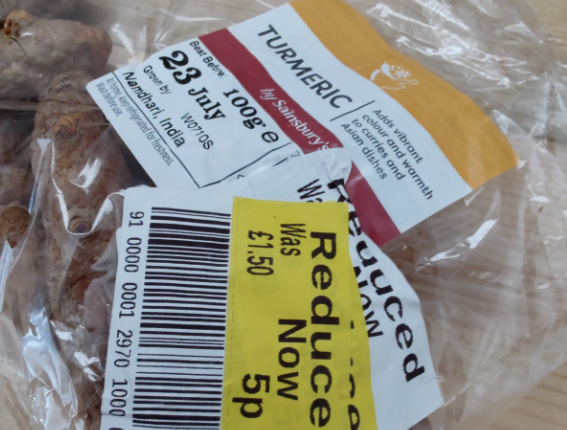Under the tread title of “Nutrition” I wrote the banner: “The interrelated factors that influence your metabolic response to food.” So much of this arena is interrelated and it very quickly becomes a web concepts, science and enacted action or habits. Autophagy is an excellent example. Kaczmarek et al., (2017) even focused a paper on the “complex interactions” of this topic – linking eating patterns (what, when and frequency) with the gut microbiome, health and circadian rhythms (the 24-hour cycles that are part of the body’s internal clock, running in the background to carry out essential functions and processes), and since then, most recently there is the addition of research interest in nutrition, gut health and wellness or ‘psychobiotics.’ We will come back to that. Not forgetting “a good diet” one particularly high in plants* and variety, is linked to reduced levels of depression, while “diets high in junk food and low fibre and diversity” increase the risk, Lai (2014).
Plants: veg, legume, grains, nuts, seeds, herbs and spices.
It really is nutrition, wellness and habits. The aim: healthier, happier and live longer.

Let’s try and unpack this and provide a basic web or map. There is the nutrition and eating patterns, primarily the ‘what’ and ‘when’ you are eating, Dr Satchin Panda outlines this for us, then there is what is going on down there in your gut, Dr Mosley does a great job summarising this for us with Dr Justin Sonnenburg spot lighting a few specific health conditions, and then there is what is going on up there in your thoughts or ‘psychobiotics.’ Again Dr Mosley does a great job exploring this in his discussion with Kirsten Berding Harold on Eat Some Bacteria. Podcasts are a great way to gather up the information and to hear from leading voices.
We have barely mentioned nutrition explicitly and that’s well over five hours listening and reading and bumping into numerous signposts to more general health and wellness links along the way. For example, general health and sleep quality, gut health, weight management (or not – see the ZOE summary) and immunity benefits. Of course, anyone interested in this arena needs to turn the knowledge into habits. (if increasing your fibre intake – take it slow and steady, be active, hydrate and give your gut time to adapt to your enthusiastic nutritional decisions) as some eating patterns and habits are easier than others to maintain, some a delayed, and there are some nutritional cautionary warnings to take notice of too – from far more qualified commentators and researchers than me!
If you are immuno-compromised – applying this knowledge requires expert advice and I will say it again, I am not an expert.
Let’s get stuck in
Until recently I had not even heard about autophagy, I knew very little about fasting (intermittent or otherwise) other than experiencing Ramadan in 2021. I knew very little about intermittent fasting, the 5:2 diet (a heavily reduced food intake 2 days per week and regular eating the other 5). I had not paid attention to nutritional phrases creeping into our common conversations such as “Eat the rainbow” and “Fast. Feast. Repeat.” Time-restricted eating, circadian rhythms or chrononutrition were unknown and therefore unexplored. I knew nothing of Dr Satchin Panda’s research and the wider interest in this field – which Dr Panda marks in excess of 70 published papers. (Note – we are currently referring to studies with mice. Mice that do live longer.)
It is only just beginning to consolidate. Let’s swing back around the block. What is autophagy?
What is autophagy
Autophagy: To self-eating.
Autophagy is essential for a cell to survive and function. It is quality control for your cells. It is your body’s process of reusing old and damaged defective cell parts, salvaging what it can, discarding what it can not re-purpose. There is one final component – autophagy is also proposed to destroy pathogens in a cell that can damage it, like viruses and bacteria – hence there signposts towards autophagy and a much wider range of health related benefits. But I am no scientist or expert but this is very interesting.
The best phrase I have read to help understand autophagy is that it is “cell upcycling” or a form of “housekeeping.”
Worn proteins, malfunctioning organelles, invading microorganisms: all are swept up by tiny internal “vacuum cleaners” that keep a living cell healthy.
Deretic and Klionsky (2008:74)
It is evidence that autophagy plays a vital role in the homeostasis of cellular health and a “critical role” in many areas of health.
Notably, as we age, autophagy decreases. Increased activation of autophagy may lead to improved longevity and a longer lifespan.*
Where are the interrelated factors that influence your metabolic response to food associated with TRE?
The process of autophagy ramps up when your body has to make the most of ‘limited’ resources (food and oxygen) – because your cells aren’t getting these resources from an outside source autophagy is initiated. Fasting and/or reduced food intake also limits resources. (A 10-40% reduction in overall caloric intake is among the most potent autophagy inducers.) On the flipside, it is thought that some polyphenols may play a role in inducing autophagy.
Exercise elevates demand for those resources. Autophagy markers immediately increase after short bouts of intense exercise and also over the course of longer moderate-intensity training sessions.
What happens when we fast or control when we eat?
- Your gut is digesting / working for five hours after last meal. Your intestine another three to four hours. Your gut is working for ten hours before fasting starts.
- Your core body temperature is elevated whilst digesting – that may impact on sleep quality
- We move to fat (from sugar) as the energy source – (we start to deplete the glucose stores, start to use fat as your energy source). As Dr Panda notes, “That once stored fat is fuelling your body that can lead to a good amount of weight loss.”
- Gut activity slows down – and the autophagy ‘cleaning crew’ get to work on the gut lining
- Our cells improve their resistance to stress and disease
The benefits of TRE are therefore available from that time stamp , 10 hours onward. TRE is presented as two hour references, 12:12, 14:10, 16:8, where the first number denotes the number of fasting hours, the second is the eating window. Here is the summary.
Building new habits is not universally easy and shorter eating windows are simply more demanding. Shift workers are a well-researched cohort (also carers). The playing field is not level.
- 12:12 eating pattern leverages autophagy benefits* (FYI 50% of adults in the US (who are not night-shift workers) eat for 15 hours or longer.)
- 14:10 “seems to be optimal” in terms of management and benefits (this is also dependent on the quality of your diet and your aims).
- “If someone is trying to lose weight or is trying to control blood pressure or blood sugar, then it may be better to start with a 10-hour eating window. 10 hours eating, 14 hours fasting.” Dr Satchin Panda with Dr Ruscio
- 16:8 may prevent overeating or discourage snacking at key times (evening snacks)
- Zoe reporting that 35% of people were snacking after nine o’clock
- Snacking habits vary across the world, more likely to be more processed-food
- Zoe reporting that 35% of people were snacking after nine o’clock
- Try not to eat 2 to 3 hours before your habitual bedtime
- After 2-3 weeks of time restricted eating, participants become more comfortable with feeling hungry and also benefit from better sleep patterns.
- Week 5 – “committed adherence” and when breaking from fasting describe “food hangovers” where routine digestion is interrupted
As a general rule of thumb, stay within a 10-hour eating window for at least 12 weeks to see the best results.
Important, if not every day – five days would make a big contribution to your health with very similar results being reported across a growing number of studies: reduce blood sugar, better control of diabetes, improved diastolic and systolic blood pressure. Some benefits are realised quickly, others take a bit longer.
Also note that around week 5 to 7 it is casually reported by Dr Panda as the first time the habits falter. Interestingly, participants using the myCircadianclock app report feeling lethargic after falling off the wagon, what Dr Panda referred to as “food hangover.”
Summary
Autophagy is what happens in our bodies and our guts when we control our eating (nutrition, wellness and habits), when we stop eating or restrict our food intake. Second, when we control or restrict the window of time of ‘when we eat’ – our eating patterns.
There is now a new area of research investigating the psychobiotics of our nutrition.
Lastly the habits that we adopt, and of course maintain or falter upon, have a role to play here too.
How does one use knowledge of autophagy and these “complex interactions” to personal benefit? Let’s get practical.
The 2012 mice
Two identical sets of mice, born to the same parents, in the same room, with the same microbiome, the same exact genes. Same exact diet and the same number of calories for 18 weeks, roughly 3 to 4 years in human life.
- Group 1 got to eat whenever they wanted to eat the food – ad libitum eating, whenever they wanted.
- Group 2 was given the same number of calories from the same food within 8 hours total. Every night, the same consistent 8 hours.
The only thing that changed:
- Group 1 mice were completely obese, diabetes, they had cardiovascular disease kind of stuff, fatty liver disease.
- Group 2 mice were completely protected from all of this disease.
Dr Panda’s conclusion: When we eat is as important as what and how much we eat.





Pingback: Why “whole-foods” and “plant based” – but “not only” – Edventures
Pingback: Why “whole-foods” and “plant based” – but “not only” – Edventures
Pingback: Why “whole-foods” and “plant based” – but “not only” – Edventures
Pingback: Home-baked bread to home-school sourdough (part II) – Edventures